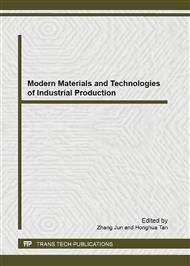p.140
p.146
p.152
p.157
p.163
p.171
p.177
p.181
p.186
Electron Beam Welding of Duplex Stainless Steel with Regulated Heat Input
Abstract:
This paper analyses the current state of welding duplex stainless steel (DSS). Despite of well-known procedures of welding DSS by standard methods, nowadays modern technologies brings several issues. Electron beam welding showed the problems with achieving the similar phase composition to base metal. By changing the focusing distance and using the post-heating it was possible to bring extra heat input to weld joint what promoted the creation of austenite. Post-heating was performed by additional electron beam pass. By modification of welding procedure it was possible to obtain the phase composition very similar to base metal.
Info:
Periodical:
Pages:
163-168
Citation:
Online since:
September 2013
Authors:
Price:
Сopyright:
© 2013 Trans Tech Publications Ltd. All Rights Reserved
Share:
Citation:


